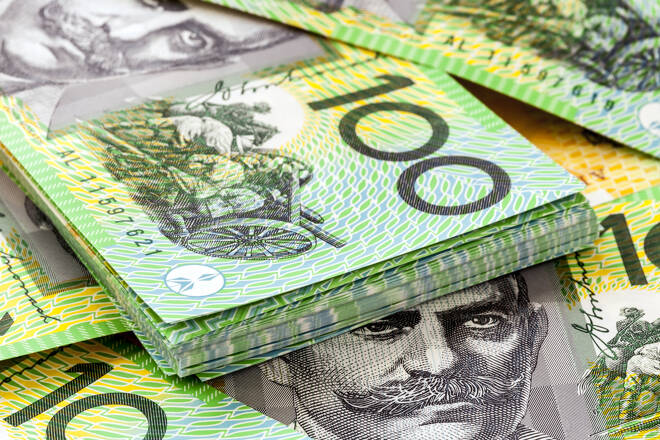Advertisement
Advertisement
Australian Dollar Forecast: Will AUD/USD Break $0.70? China May Be Key
By:
Key Points:
- China’s industrial profits data could significantly impact AUD/USD demand, with an expected rise of 3.5%.
- China’s policy measures to boost the economy may support Aussie trade terms and bolster AUD demand.
- The U.S. Personal Income and Outlays Report could influence Fed rate expectations, affecting AUD/USD movement.
China’s Industrial Profits in Focus
On Friday, September 27, economic data from China could impact AUD/USD demand. Economists expect industrial profits to increase by 3.5% year-to-date in August compared to those from the first eight months of 2023. It would be a modest fall from a 3.6% rise in July. Weaker-than-expected numbers could test buyer demand for the Aussie dollar, but the impact could be short-lived.
The People’s Bank of China and Beijing have introduced several policy measures to bolster the Chinese economy. The measures aim to support the real estate sector and fuel consumption.
Significantly, increased demand from China could benefit Australia, as China accounts for one-third of Australian exports. With a trade-to-GDP ratio of over 50% and 20% of the Australian workforce in trade-related jobs, better trade terms would support the Australian economy and the Aussie dollar.
On Thursday, the RBA Financial Stability Review warned that the Australian economy remains vulnerable to trade and investment channels, particularly in the case of a sharp downturn in China. A pickup in demand from China could dampen bets on a Q4 2024 RBA rate cut.
Expert Views on the RBA Rate Path
Speculation has intensified about the timing of an RBA rate cut. AMP’s Head of Investment Strategy and Chief Economist, Shane Oliver, commented,
“Our base case remains for a first RBA cut in Feb (after Q3 & Q4 CPIs confirm falling inflation, but the chance of an earlier move is high.”
US Economic Calendar: US Personal Income and Outlays Report Pivotal
Later in the Friday session, the crucial Personal Income and Outlays Report will impact US dollar demand. Economists forecast the Core PCE Price Index to increase by 2.7% year-on-year in August, up from 2.6% in July.
A softer-than-expected Core PCE Price Index and weaker personal income and spending figures could boost bets on a 50-basis point November Fed rate cut. A more dovish Fed rate path may push the AUD/USD toward $0.70.
Short-Term Forecast for AUD/USD
Near-term AUD/USD trends could depend on China’s policy maneuvers and the US Personal Income and Outlays Report.
Accommodative policy measures from Beijing could boost the Aussie economy and delay the timing of an RBA rate cut. Conversely, rising support for a 50-basis point November Fed rate cut could tilt monetary policy divergence toward the Aussie dollar. A narrowing in the interest rate differential between the US and Australia may push the AUD/USD toward $0.70.
Traders should monitor real-time data, news updates, and expert commentary to adjust their trading strategies accordingly.
AUD/USD Technical Analysis
Daily Chart and the AUD/USD Breakout
The AUD/USD sits well above the 50-day and 200-day EMAs, affirming bullish price signals.
A break above the September 25 high of $0.69081 could give the bulls a run at the $0.69500 level. Furthermore, a return to $0.69500 could signal a move toward $0.70.
Traders should consider central bank commentary, economic data from China, and US economic indicators, which may influence AUD/USD price movements.
Conversely, a drop below $0.68500 could give the bears a run at the $0.68006 support level. A fall through the $0.68006 support level may bring the $0.67500 level into play.
With a 14-period Daily RSI reading of 64.49, the Aussie dollar may climb to $0.69081 before entering overbought territory.
About the Author
Bob Masonauthor
With over 28 years of experience in the financial industry, Bob has worked with various global rating agencies and multinational banks. Currently he is covering currencies, commodities, alternative asset classes and global equities, focusing mostly on European and Asian markets.
Did you find this article useful?
Latest news and analysis
Advertisement
